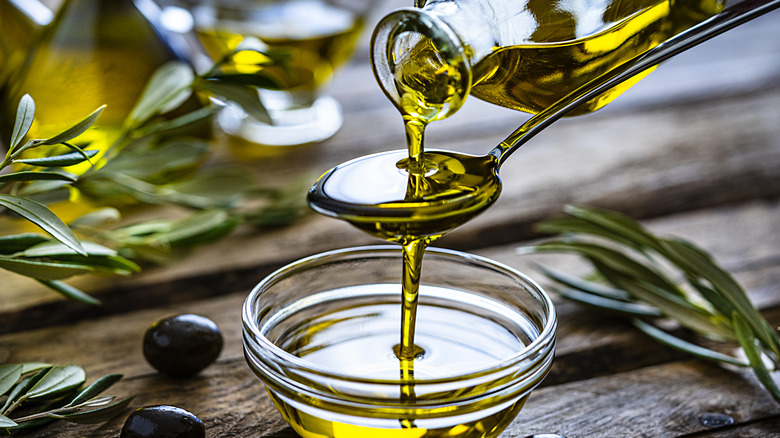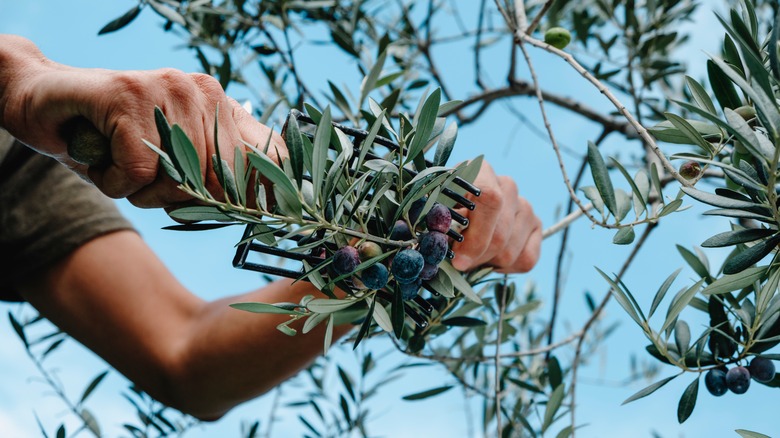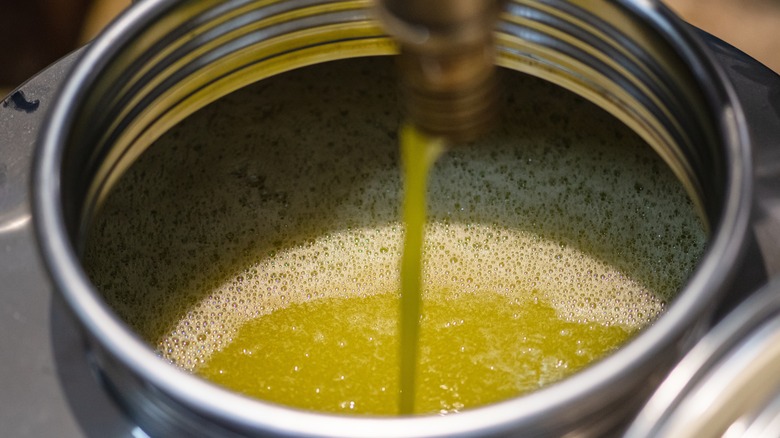The Difference Between Blended And Single-Origin Olive Oil
Olive oil is more than just an everyday ingredient for making marinades and salad dressings. It's a part of human history. It's been a staple in our diets for at least 8,000 years, which means humans have been squeezing oil from olives almost as long as civilization itself. Despite its ancient origins, however, it seems like there are more types of olive oil at the grocery store than ever these days. The latest trend is bottles of single-origin oil, which are indeed different from bottles of blended oil, but don't buy into any dubious health claims or overpay for fancy packaging. The only thing you need to know is that for many, the term "single-origin" is used to refer to oil that was pressed from olives that were grown and harvested at only one location. (That being said, there technically isn't an official — or even unanimously agreed upon — definition for what single-origin olive oil actually is, or whether the location itself is as specific as a single farm or as overarching as an entire region.)
Most olive oil at the grocery store is made using a process of blending. This isn't necessarily a good or bad thing. It just allows olive oil producers to make oils that always taste the same no matter where and when you buy a bottle. Single-origin bottles, however, can have very distinct aromatics and flavors and will vary from bottle to bottle. The choice between the two styles all comes down to how you plan to use the olive oil.
Single-origin olive oil is more unique and traceable
There was a time when the biggest olive oil choice was between regular and extra virgin. These days, however, almost all bottles of olive oil are extra virgin — that is, pressed without any extra heat or chemicals. Instead, we're faced with the choice between blended oils and single-origin oils.
Think of single-origin olive oils like buying a bottle of wine from a specific winery and vineyard. Single-origin oils are made with olives grown on one farm or olive grove that are subject to the growing conditions at that one site. As such, the olives and their oil will taste different than olives grown elsewhere due to the climate, soil, and other growing conditions specific to that location. They can even taste different from year to year depending on the environment. In winemaking this is known as "terroir," but the concept is similar for olive oil. In fact a lot of vineyards also grow olive trees because they thrive in the same climates as grapes.
Don't heat single-origin olive oil
Terroir isn't the only thing single-origin olive oil and wine have in common. Because they're made in small batches from single sources, these bottles are typically more expensive than blended oils. Many small farms harvest their olives by hand and pay more for delicate processing than large producers do for blended oils. Plus these high-quality harvests are packaged in more expensive bottles and labels than their blended brethren, which all adds up.
Because they're more expensive and have unique aromas and flavors, single-origin olive oil is best eaten with cold foods so that you can taste all the nuances. Heat from cooking can destroy delicate aromatics in the oil, so save your single-origin bottles for dipping a piece of crusty sourdough or for drizzling on garden-fresh salad greens, and use blended olive oils for jobs like grilling and sautéing. Think of a bottle of single-origin olive oil as something to use for a special occasion or for recipes that will let the flavors shine through (though definitely keep in mind that olive oil has a shelf life, and can go bad or rancid). For everything else, including non-cooking applications, a high-quality, extra-virgin blend will work just fine.


